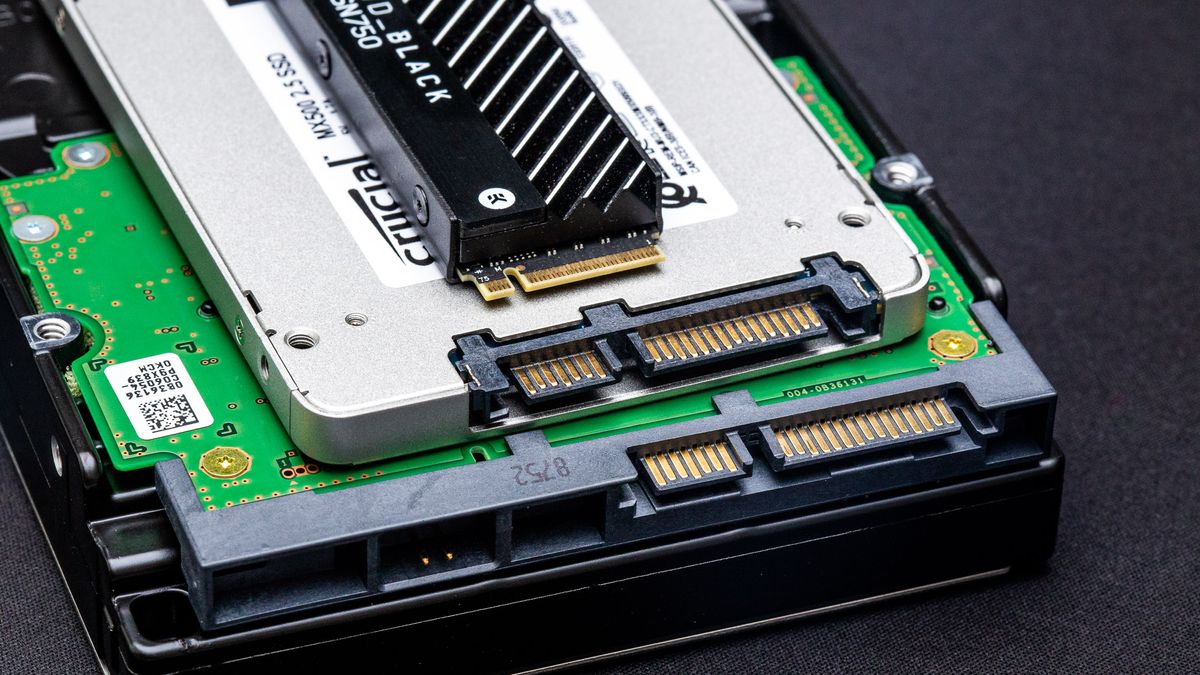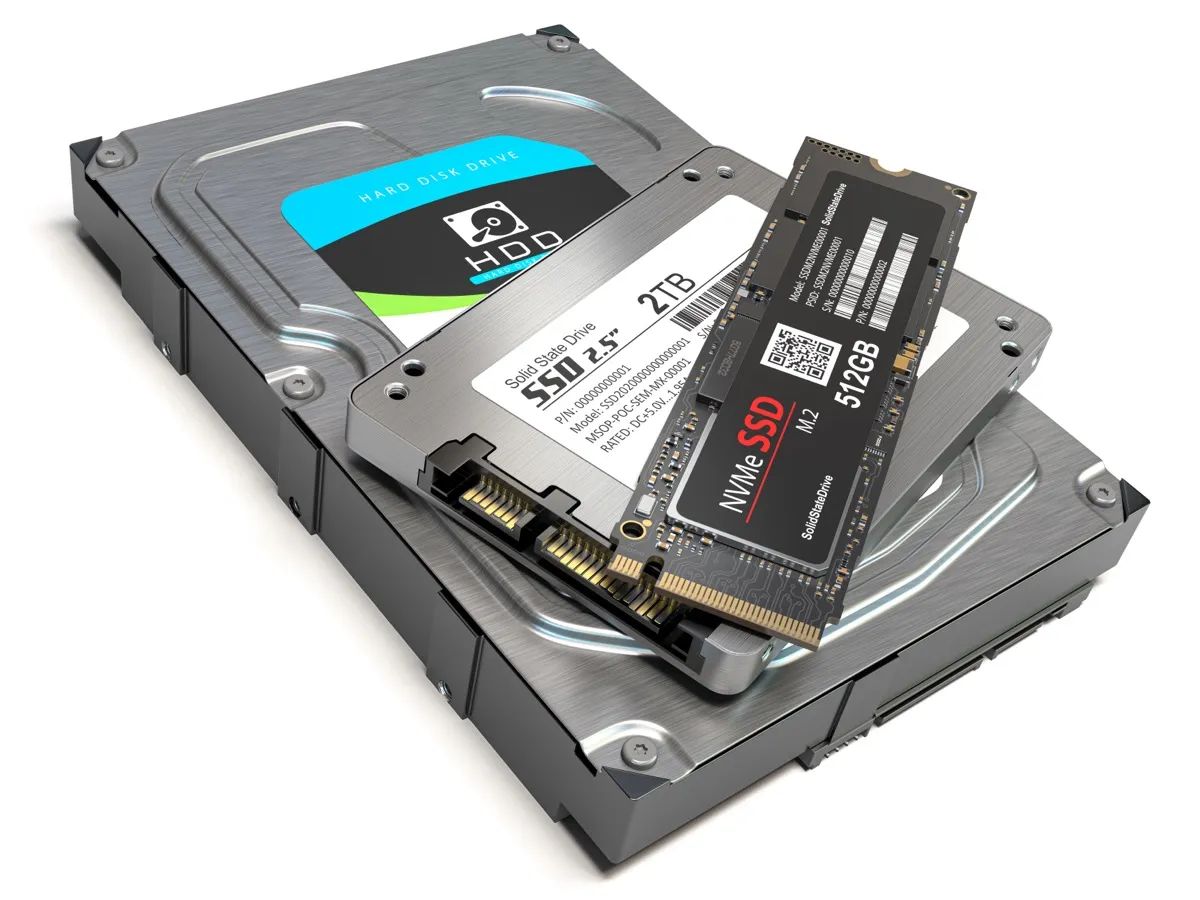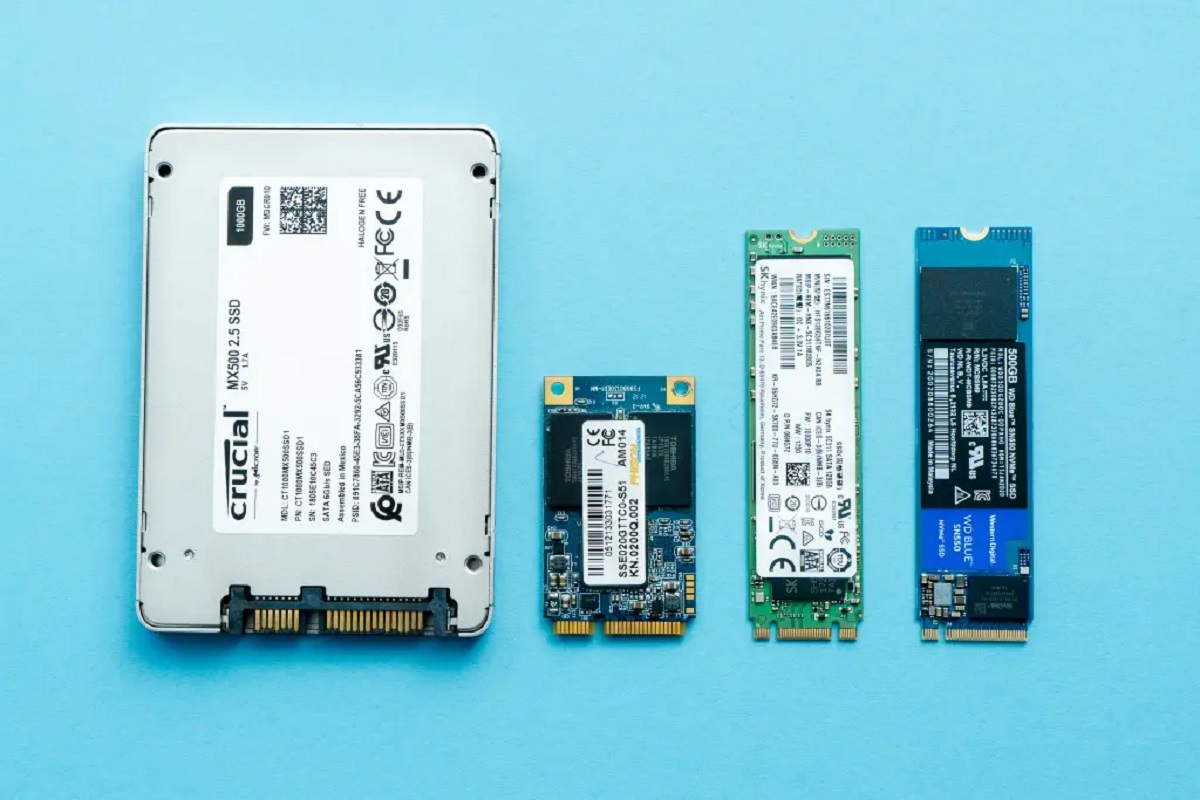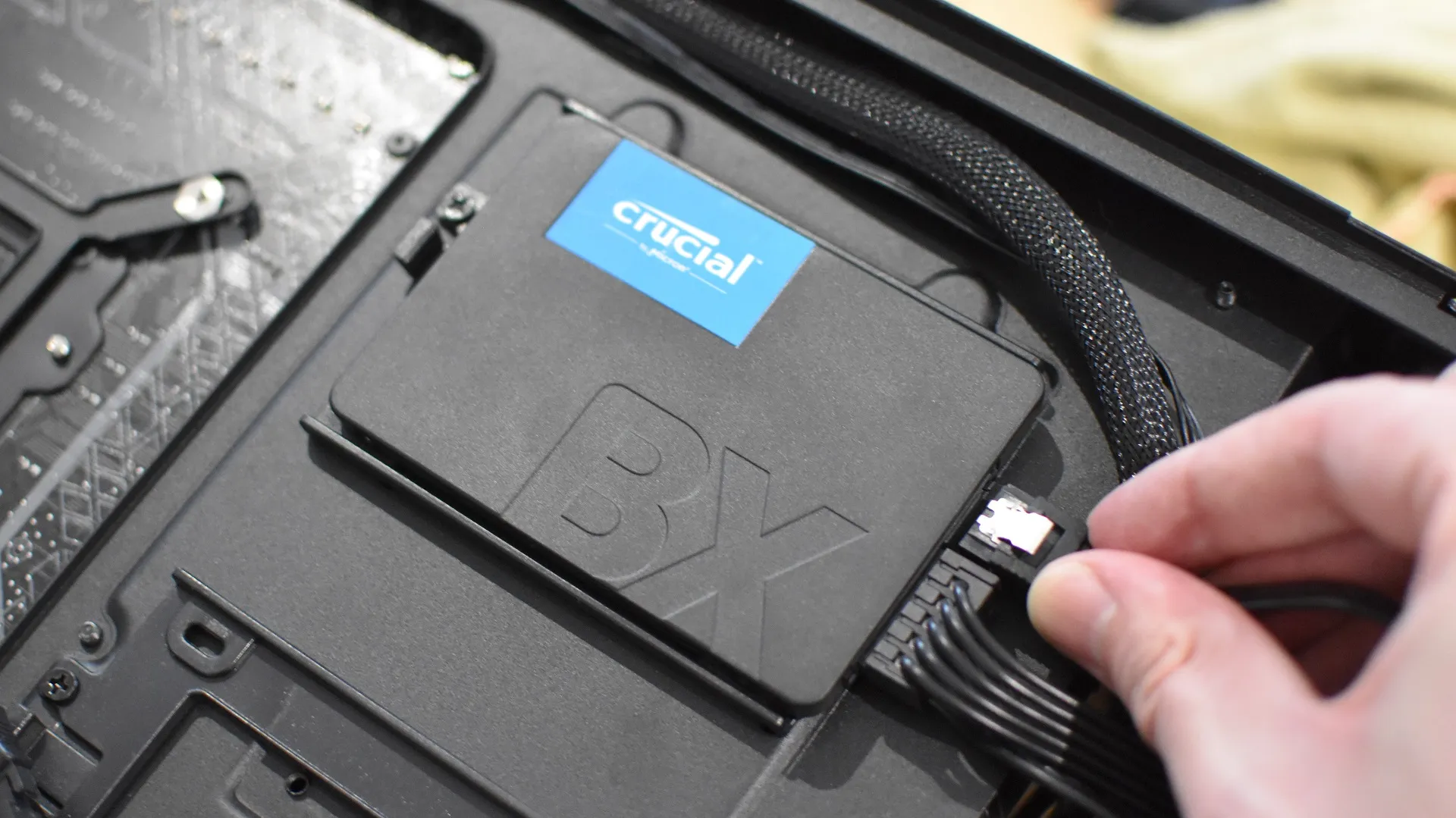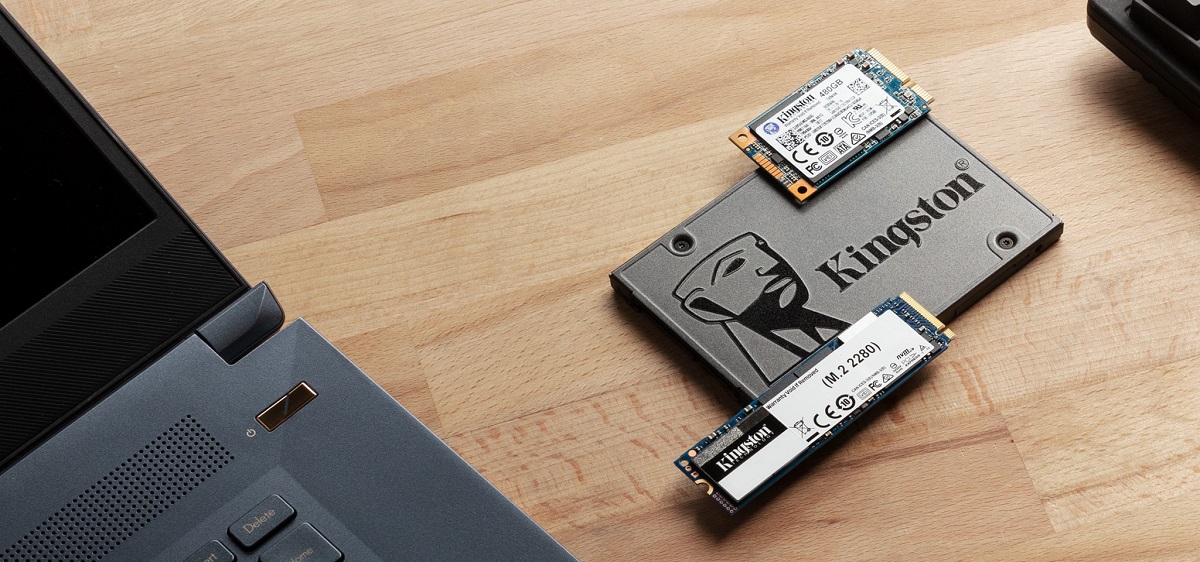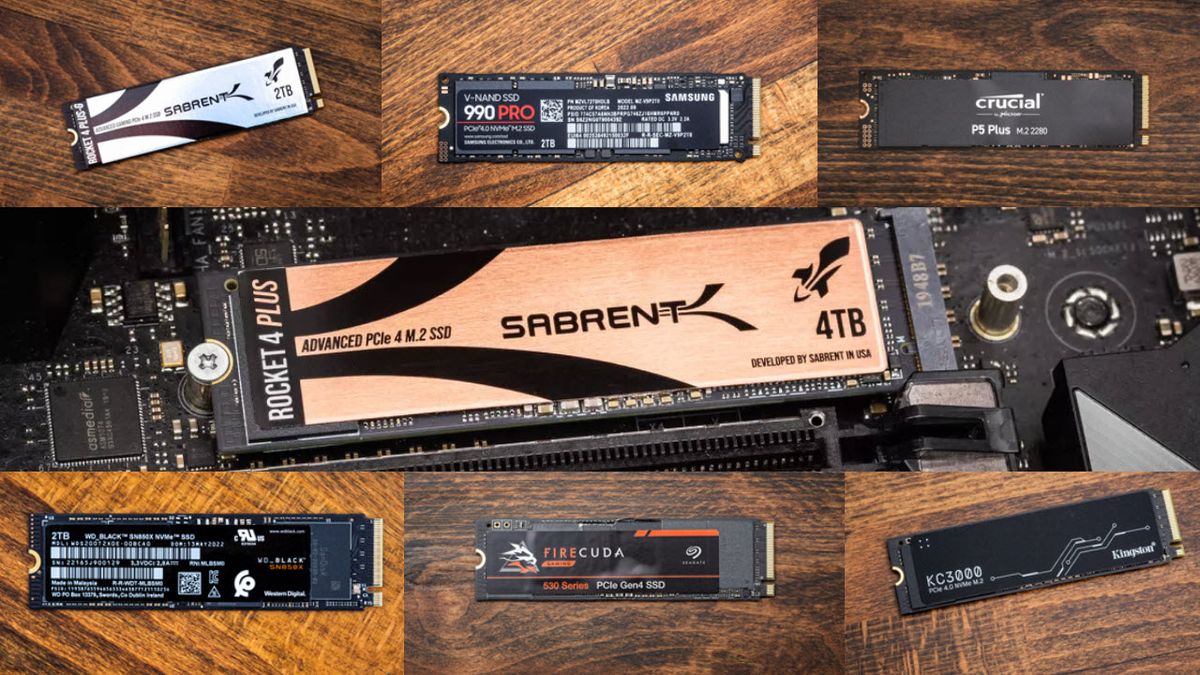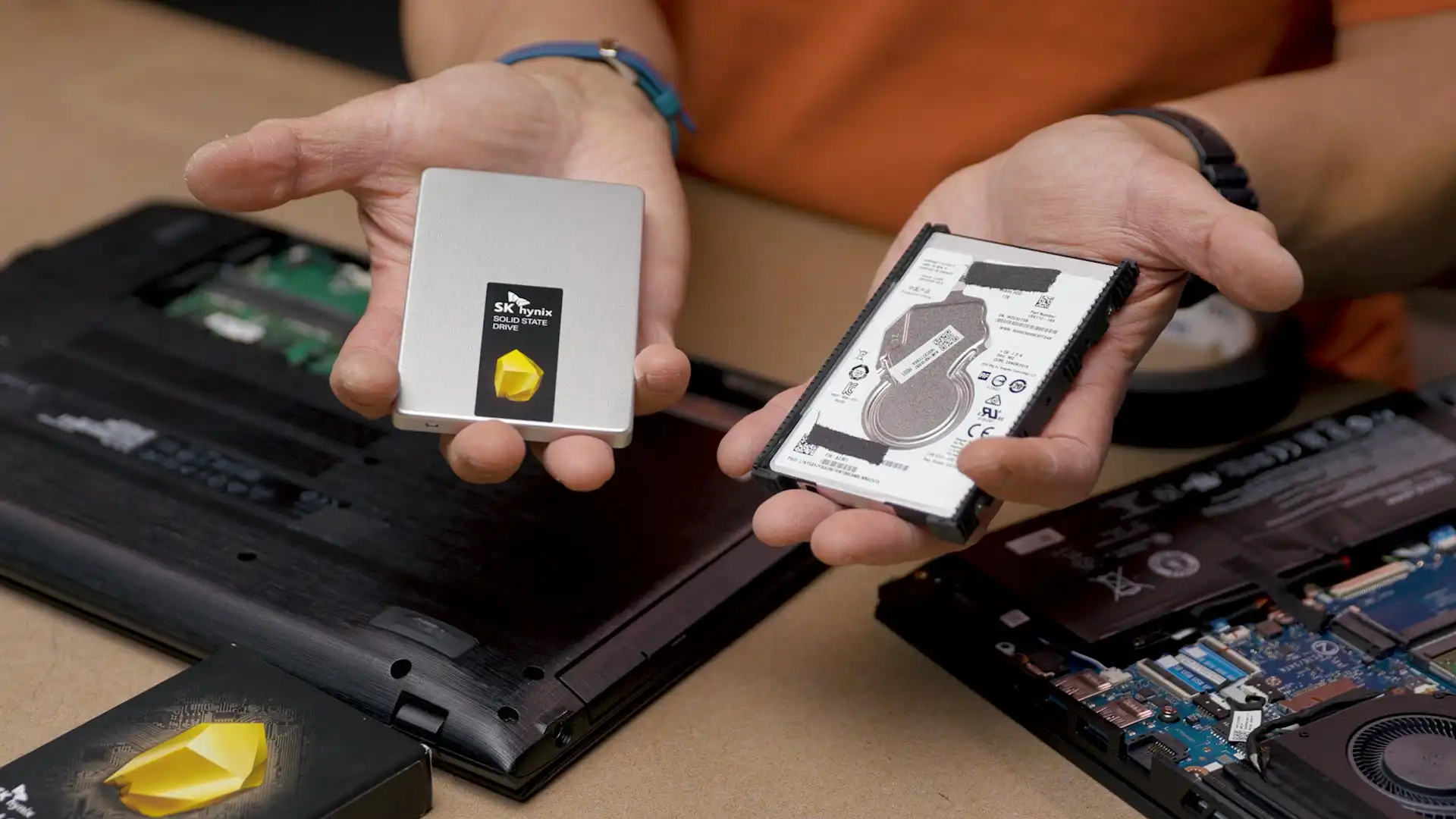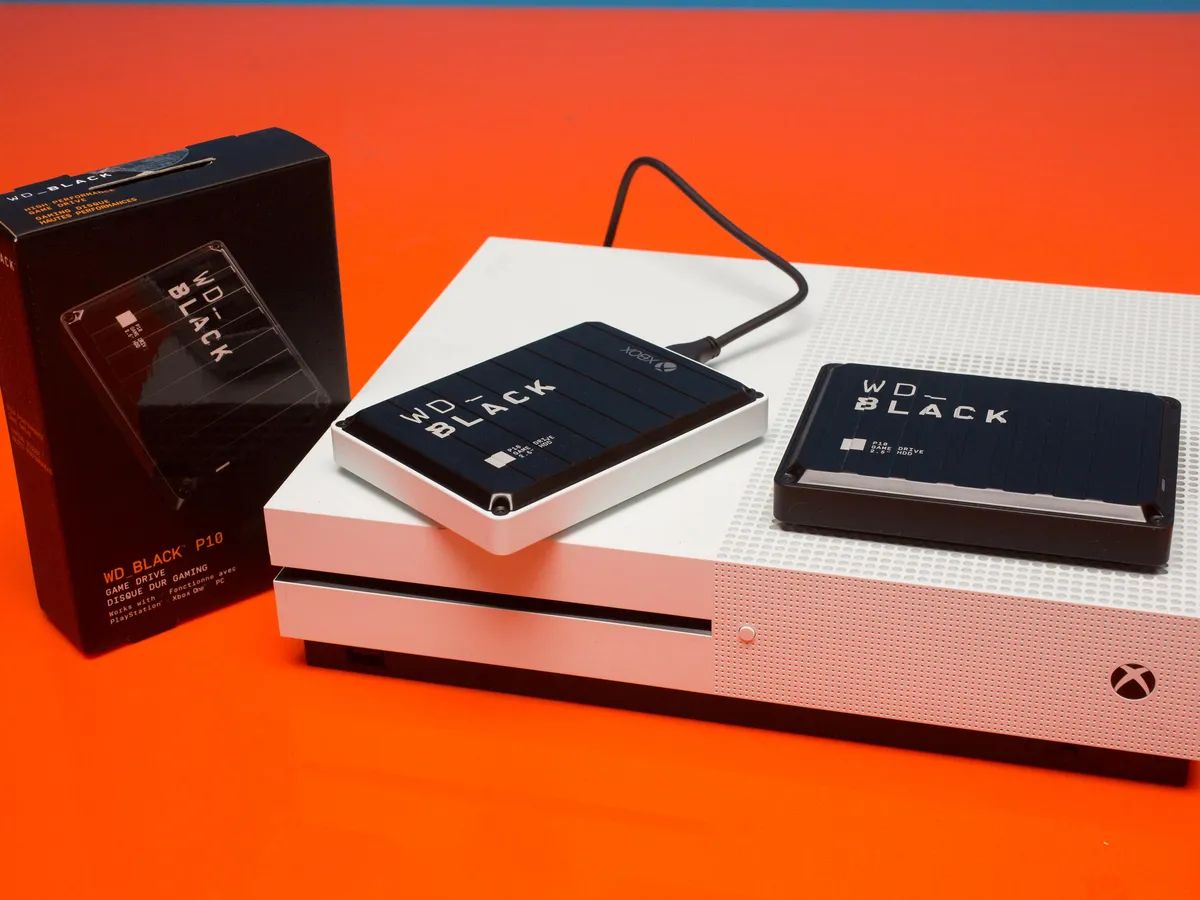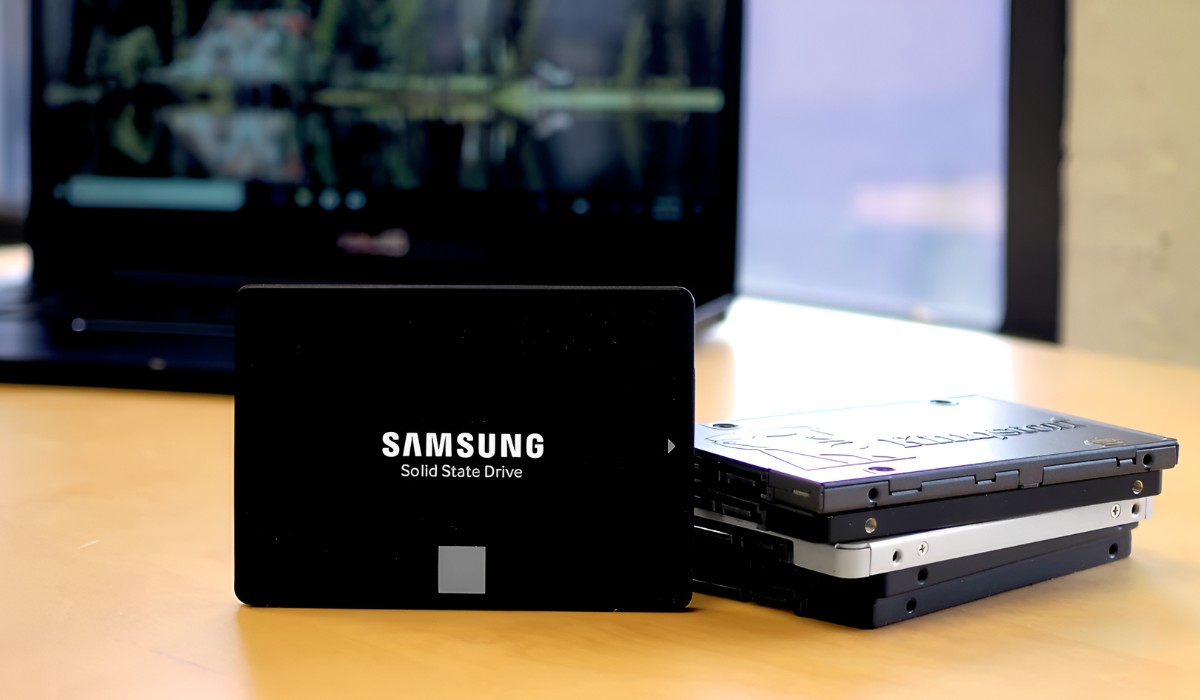Introduction
Welcome to the world of solid-state drives (SSDs), one of the game-changers in the realm of data storage technology. As technology continues to advance at a rapid pace, traditional hard disk drives are being gradually replaced by SSDs in various devices, including laptops, desktops, and servers. But have you ever wondered how much power these SSDs actually consume?
In this article, we will explore the power consumption of solid-state drives and delve into the factors that affect their energy requirements. Understanding the power consumption of SSDs is crucial, as it has implications for both performance and battery life in portable devices.
SSDs have revolutionized the storage industry due to their numerous advantages over traditional hard drives. They are faster, more reliable, and more durable, making them an attractive choice for users who prioritize speed and efficiency. However, power efficiency is another area where SSDs excel.
By utilizing a different technology and design compared to traditional hard drives, SSDs consume significantly less power, resulting in improved energy efficiency. While power consumption may not be the primary concern for the average user, it becomes increasingly important for mobile devices, such as laptops and smartphones, where battery life determines how long you can work or play on the go.
In the following sections, we will explore how SSDs work, the different types and capacities available, and the impact of power consumption on performance and battery life. We will also provide some useful tips on how to optimize power consumption and maximize the efficiency of your SSD.
So, if you’re curious about how much power your SSD is using and want to learn how to make the most of its performance while conserving energy, read on. Let’s uncover the fascinating world of solid-state drive power consumption.
What is a Solid State Drive (SSD)?
A solid-state drive, or SSD, is a storage device that uses integrated circuits to store data persistently. Unlike traditional hard disk drives (HDDs), which rely on rotating magnetic platters and mechanical parts to read and write data, SSDs use flash memory technology to achieve faster and more reliable performance.
SSDs are composed of NAND flash memory chips that retain data even when power is turned off. The absence of moving parts in SSDs makes them less susceptible to mechanical failures and allows for quicker access to data. This results in faster boot times, reduced application loading times, and improved overall system responsiveness.
One of the key components of an SSD is the controller. The controller manages the storage and retrieval of data from the NAND flash memory chips. It also handles functions such as wear leveling, error correction, and garbage collection to ensure the longevity and reliability of the drive.
SSDs come in various form factors, including the standard 2.5-inch drives used in laptops and desktops, M.2 drives that are commonly found in ultrabooks and compact systems, and even PCIe-based drives that offer even higher performance levels.
The capacity of SSDs ranges from a few hundred gigabytes (GB) to multiple terabytes (TB), catering to the storage needs of a wide range of users. These drives are available in various price points, allowing users to select the size that best fits their requirements and budget.
With the advancement of technology, SSDs have become the preferred choice for many users. Their superior speed, durability, and energy efficiency make them ideal for use in both personal and enterprise applications. SSDs have transformed the way we store and access data, providing immense benefits in terms of performance and reliability.
In the next section, we will delve into the inner workings of SSDs and explore how they operate to provide fast and efficient data storage and retrieval.
How do SSDs work?
To understand how solid-state drives (SSDs) function, it’s important to grasp the key components and processes that make them operate efficiently. Unlike traditional hard disk drives (HDDs), SSDs do not rely on mechanical parts for data storage and retrieval. Instead, SSDs utilize a combination of flash memory and advanced controller technology.
At the heart of an SSD is the NAND flash memory, a non-volatile storage technology that retains data even when the power is turned off. NAND flash memory is organized into pages and blocks, with each page typically storing several kilobytes of data.
When data is written to an SSD, it is stored in specific memory cells on the NAND flash. However, unlike HDDs that write and overwrite data on magnetic platters, SSDs operate using a process called “program/erase” (P/E) cycles. During a P/E cycle, data is written to an empty page, but to modify existing data, the entire block must be erased and then rewritten with the modified data.
The controller acts as the brain of the SSD, managing data storage, retrieval, and overall functionality. It communicates with the computer’s operating system and translates commands into actions within the SSD. The controller also handles essential tasks such as wear leveling, where data is evenly distributed across the NAND flash cells to prevent excessive wear on specific areas.
SSDs employ various algorithms and technologies to optimize performance and reliability. One crucial mechanism is error correction, which ensures data integrity by detecting and correcting potential errors that may occur during data storage or retrieval. Advanced error correction codes (ECC) are used to identify and rectify these errors, ensuring the accuracy of stored data.
Another essential technology is wear leveling. NAND flash memory cells can endure only a limited number of P/E cycles before they become unreliable. Wear leveling ensures even distribution of write and erase operations across all the memory cells, extending the lifespan and overall durability of the SSD.
Caching is also a vital component of SSD operation. SSDs allocate a portion of their memory as cache, which serves as a temporary storage area for frequently accessed data. By storing commonly accessed data in cache, SSDs can retrieve information quicker, resulting in improved system responsiveness and overall performance.
Overall, the combination of NAND flash memory, advanced controller technology, and various optimization techniques makes SSDs efficient and reliable storage devices. The absence of mechanical parts allows for faster data access, reduced latency, and improved durability compared to traditional hard drives.
In the next section, we will explore the power consumption of SSDs and the factors that influence their energy requirements.
Power Consumption of SSDs
When it comes to power consumption, solid-state drives (SSDs) have a clear advantage over traditional hard disk drives (HDDs). SSDs are known for their energy efficiency, primarily due to their lack of moving parts and utilization of advanced technology.
The power consumption of an SSD is influenced by various factors, including its operational state, workload, and capacity. In comparison to HDDs, SSDs typically consume less power in all states, including idle, active, and standby.
One key reason for the low power consumption of SSDs is the absence of mechanical parts. Unlike HDDs that require the movement of disks and read/write heads, SSDs use solid-state memory, eliminating the need for any physical movement. As a result, the power required to operate an SSD is significantly lower, leading to improved energy efficiency and reduced heat generation.
Typically, SSDs consume the most power during active read and write operations. When data is being accessed or written to the drive, the controller and NAND flash memory are actively working, resulting in a higher power draw. However, even during these intensive activities, SSDs consume considerably less power compared to HDDs.
In contrast, during idle periods, where the drive is not actively processing data, SSDs consume comparatively less power. This is because the SSD can transition to a low-power state, where it draws minimal energy while still being able to quickly respond to any data access requests.
The power consumption of an SSD is also influenced by its capacity. Generally, larger capacity SSDs tend to consume slightly more power than lower capacity models. However, the difference in power consumption between different capacity SSDs is relatively minor and should not significantly impact overall energy efficiency.
In terms of power consumption, SSDs have a clear advantage over HDDs. SSDs not only consume less power during active operations but also when idle. The energy efficiency of SSDs translates into several benefits, such as longer battery life in laptops and lower electricity costs in data centers.
Understanding the power consumption of SSDs is crucial, as it has an impact on device performance, battery life, and overall energy efficiency. In the next section, we will explore the specific factors that influence the power consumption of SSDs to gain a deeper understanding of this technology’s efficiency.
Factors Affecting Power Consumption of SSDs
The power consumption of solid-state drives (SSDs) is influenced by a variety of factors that can impact their overall energy efficiency. Understanding these factors is essential for optimizing power consumption and maximizing the performance of your SSD.
1. Workload: The workload being performed on an SSD can significantly impact its power consumption. Intensive tasks such as large file transfers or complex data processing operations can require more power compared to lighter workloads. Understanding the specific requirements of your workload can help you manage and optimize power consumption accordingly.
2. Controller Efficiency: The efficiency of the SSD’s controller plays a crucial role in power consumption. Advanced controllers are designed to optimize power usage during various operations, including read and write operations, idle periods, and low-power states. SSDs with efficient controllers can help minimize power consumption without compromising performance.
3. NAND Flash Technology: The type and generation of NAND flash memory used in an SSD can impact power consumption. Newer generations of NAND flash tend to offer better energy efficiency. For example, triple-level cell (TLC) and quad-level cell (QLC) NAND flash technologies typically consume more power compared to single-level cell (SLC) or multi-level cell (MLC) NAND flash. However, advancements in technology are continually improving the energy efficiency of newer NAND flash generations.
4. Firmware and Optimization: The firmware of an SSD plays a crucial role in managing power consumption. SSD manufacturers often release firmware updates that include optimizations to improve power efficiency. It is important to keep your SSD firmware up to date to benefit from these enhancements and potentially reduce power consumption.
5. Drive Capacity: The capacity of an SSD can impact its power consumption, although the difference is generally minimal. Larger capacity SSDs may consume slightly more power compared to lower capacity models. However, the energy efficiency benefits of an SSD still outweigh any minor variations in power consumption based on capacity.
6. Operating Temperature: The operating temperature of an SSD can affect its power consumption and overall performance. Extreme heat can impact power efficiency, leading to increased power consumption. Keeping the drive within optimal temperature ranges can help maintain optimal power efficiency.
By considering these factors, users can make informed decisions to optimize the power consumption of their SSDs. It is crucial to strike a balance between power consumption and performance to achieve the desired efficiency and longevity of the storage device.
In the next section, we will explore the specific power consumption patterns of SSDs during idle periods as well as read and write operations.
Idle Power Consumption of SSDs
Idle power consumption refers to the amount of power a solid-state drive (SSD) consumes when it is not actively performing any read or write operations. Unlike mechanical hard disk drives (HDDs) that continue to consume significant power even during idle periods, SSDs demonstrate remarkable energy efficiency during these inactive states.
When an SSD is idle, it enters a low-power mode, known as an “idle state” or “sleep state,” where it consumes minimal power while still remaining responsive to data access requests. The power-saving features of SSDs during idle periods are incredibly beneficial, particularly for portable devices like laptops and tablets, as they help extend battery life.
The idle power consumption of SSDs can typically range from a few hundred milliwatts to a few watts, depending on various factors including the specific SSD model and manufacturer. Generally, newer generations of SSDs offer better power efficiency, with advancements in NAND flash memory and controller technology contributing to reduced idle power consumption.
During idle periods, SSDs focus on conserving energy while still being ready to respond quickly to any data access requests from the operating system or applications. To achieve this, SSDs enter a sleep mode where power consumption is minimized by turning off certain components and reducing clock speeds.
Some SSDs implement aggressive power-saving techniques, such as reducing the frequency at which they check for data access requests or disabling certain features temporarily. These techniques help reduce idle power consumption without negatively impacting the drive’s responsiveness when it needs to resume active operations.
It is worth noting that while SSDs consume significantly less power during idle periods compared to active read and write operations, they still consume some amount of power. This is because certain components of the SSD, such as the controller and memory cells, need to remain powered to ensure quick response times when data access is required.
Overall, the idle power consumption of SSDs is significantly lower than that of HDDs, making them a more energy-efficient storage option. The reduced power consumption during idle periods not only helps conserve battery life but also contributes to lower electricity costs and a more environmentally friendly computing experience.
In the next section, we will explore the power consumption patterns of SSDs during read and write operations, shedding light on their performance and energy efficiency during these active states.
Power Consumption During Read and Write Operations of SSDs
During read and write operations, solid-state drives (SSDs) consume slightly more power compared to idle periods. However, the power consumption of SSDs during active operations remains significantly lower than that of traditional hard disk drives (HDDs).
When data is being read from or written to an SSD, the controller and NAND flash memory work together to facilitate the transfer of information. The power consumption during these operations depends on several factors, including the workload, the capacity of the SSD, and the efficiency of the controller.
During read operations, the controller of the SSD retrieves the requested data from the NAND flash memory and delivers it to the system. While reading data is less power-intensive compared to writing, there is still a modest increase in power consumption as the controller actively accesses and transfers the data.
Write operations require more power compared to read operations since the controller not only needs to write new data to the NAND flash, but it may also need to perform additional tasks such as erasing data blocks before writing new information. These operations can be more demanding in terms of power consumption.
The power consumption during read and write operations varies depending on the specific activity being performed. Sequential read and write operations, where large blocks of data are being continuously read or written, generally consume more power compared to random read and write operations.
It’s worth noting that while SSDs consume slightly more power during read and write operations, their power consumption is still significantly lower than that of HDDs. This is because SSDs don’t rely on mechanical parts that need to spin or move during data access, resulting in more efficient power utilization.
Additionally, advancements in SSD technology, such as more efficient controllers and improved NAND flash memory, have contributed to reduced power consumption during active operations. SSD manufacturers continue to innovate and optimize power efficiency, further enhancing the overall energy efficiency of SSDs.
As SSD technology continues to evolve, power consumption during read and write operations is expected to decrease even further, providing a more energy-efficient storage solution for various devices and applications.
In the next section, we will explore the power consumption of different types and capacities of SSDs, shedding light on the potential variations in power requirements based on these factors.
Power Consumption of Different Types and Capacities of SSDs
The power consumption of solid-state drives (SSDs) can vary based on the specific type and capacity of the drive. While SSDs are generally more power-efficient than traditional hard disk drives (HDDs), there can be slight differences in power requirements depending on certain factors.
1. Type of SSD: Different types of SSDs, such as 2.5-inch SATA SSDs, M.2 SSDs, or PCIe-based SSDs, may have varying power consumption levels. PCIe-based SSDs, for example, may require more power due to their higher performance capabilities and utilization of faster interfaces compared to SATA or M.2 SSDs. However, improvements in technology have led to more power-efficient designs across all types of SSDs.
2. Capacity: Generally, higher-capacity SSDs may consume slightly more power than lower-capacity models. This is because larger SSDs typically have more NAND flash memory chips, requiring additional power to operate. However, the difference in power consumption between different capacities of SSDs is typically minimal and should not significantly impact overall energy efficiency.
3. Flash Memory Technology: The specific flash memory technology used in an SSD can also impact power consumption. Different generations of NAND flash memory, such as single-level cell (SLC), multi-level cell (MLC), triple-level cell (TLC), or quad-level cell (QLC), have varying power requirements. Generally, newer generations of NAND flash memory tend to offer better power efficiency, as they are designed to optimize performance while minimizing power usage.
4. Controller Efficiency: The efficiency of the SSD controller plays a crucial role in power consumption. Advanced controllers are designed to optimize power usage during various operations, including read and write operations, idle periods, and low-power states. SSDs with more efficient controllers can contribute to overall power savings and improved energy efficiency.
5. Firmware Optimization: The firmware of an SSD can impact power consumption through various optimizations introduced by manufacturers. Regular firmware updates often include enhancements to improve power efficiency, allowing the SSD to operate at maximum performance while minimizing power consumption.
While there may be slight differences in power consumption based on the type and capacity of the SSD, it is important to note that SSDs as a whole are still significantly more power-efficient than HDDs. The reduced power consumption of SSDs contributes to longer battery life in portable devices, lowers electricity costs, and provides a more environmentally friendly storage solution.
As technology continues to advance, SSD manufacturers are continually improving power efficiency in their drives. Through innovations in flash memory technology, controller designs, and firmware optimizations, SSDs are becoming even more energy-efficient, providing users with high-performance storage without compromising power consumption.
In the next section, we will explore the power efficiency of SSDs compared to traditional hard disk drives, highlighting the advantages of SSDs in terms of energy consumption.
Power Efficiency of SSDs Compared to Traditional Hard Drives
When it comes to power efficiency, solid-state drives (SSDs) have a significant advantage over traditional hard disk drives (HDDs). SSDs offer superior energy efficiency due to their unique design and absence of mechanical parts.
Compared to HDDs, SSDs consume significantly less power during various operational states, including idle, read, and write activities. This reduced power consumption translates into several benefits, both for individual users and enterprise environments:
1. Energy Savings: The lower power consumption of SSDs results in reduced electricity usage, which can lead to lower energy costs for individuals and organizations. This is particularly important in large-scale deployments, such as data centers, where the energy efficiency of storage devices plays a crucial role in minimizing operational expenses.
2. Extended Battery Life: In portable devices like laptops, tablets, and smartphones, battery life is a critical factor. SSDs, with their lower power consumption, help extend battery life, allowing users to work, play, or browse for longer periods without needing to recharge. This is especially advantageous for individuals who are frequently on the move and rely on their devices without convenient access to power outlets.
3. Heat Reduction: SSDs generate significantly less heat compared to HDDs due to the absence of mechanical parts and reduced power requirements. This is beneficial in terms of system cooling, as it helps maintain lower operating temperatures. Lower heat generation results in a more comfortable and efficient computing experience while reducing the load on cooling systems.
4. Environmental Impact: The power efficiency of SSDs contributes to a reduction in overall energy consumption, resulting in a smaller carbon footprint. By consuming less electricity, SSDs help reduce greenhouse gas emissions, making them a more environmentally friendly storage solution.
5. Performance Optimization: In addition to power efficiency, SSDs offer superior performance compared to HDDs. The faster data access and transfer speeds of SSDs not only enhance productivity but also result in overall energy savings. Tasks that would take longer on an HDD, requiring more sustained power consumption, can be completed more quickly on an SSD, minimizing energy usage.
While HDDs still have their place in certain applications requiring large storage capacities at a lower cost per gigabyte, the power efficiency and performance benefits of SSDs make them an increasingly popular choice for individuals and businesses alike. The energy-conscious approach of SSDs aligns with the growing emphasis on sustainability and energy efficiency in the computing industry.
As SSD technology continues to advance, we can expect even more power-efficient designs, further reducing energy consumption and improving the overall environmental impact of storage devices.
In the next section, we will explore the impact of power consumption on the performance and battery life of devices using SSDs.
Impact of Power Consumption on Performance and Battery Life
The power consumption of a storage device, such as a solid-state drive (SSD), can have a significant impact on the overall performance and battery life of devices in which they are used. Understanding this impact is crucial for optimizing the energy efficiency and maximizing the usability of these devices.
1. Performance: When it comes to performance, lower power consumption can often lead to improved overall system responsiveness. Since SSDs consume less power compared to traditional hard disk drives (HDDs), they generate less heat and require less cooling. This allows the components of the device to operate at lower temperatures and minimize the risk of thermal throttling, which can negatively affect performance. As a result, devices using SSDs often experience faster boot times, reduced application loading times, and quicker data access, enhancing the overall user experience.
2. Battery Life: Battery life is a critical factor, especially in portable devices. The power efficiency of SSDs significantly contributes to extending the battery life of laptops, tablets, and smartphones. With lower power consumption, SSD-equipped devices can operate for longer periods on a single charge compared to devices using HDDs. This extended battery life allows users to accomplish more tasks, stream media, or work on the go without the need for frequent charging, providing increased mobility and convenience.
3. Heat Generation: Higher power consumption in storage devices, such as HDDs, can result in increased heat generation. The excess heat can raise the operating temperature of the entire system and potentially cause thermal stress to other components. Over time, excessive heat can lead to decreased performance, system instability, and a shorter lifespan of the device. In contrast, the lower power consumption of SSDs helps maintain optimal operating temperatures, reducing the risk of overheating and ensuring the stability and longevity of the system.
4. System Efficiency: Devices equipped with power-efficient SSDs can operate more efficiently overall. With reduced power consumption, the energy requirements of the device are minimized, resulting in lower electricity costs. Moreover, the lower power consumption contributes to a smaller carbon footprint, as fewer resources are required to power and cool the device. This aligns with the increasing emphasis on sustainability and energy efficiency in computing, promoting a more environmentally friendly computing experience.
While the impact of power consumption on performance and battery life may vary depending on other device components and usage patterns, SSDs’ lower power requirements provide numerous advantages. These benefits include enhanced performance, extended battery life, improved system efficiency, and reduced risk of overheating. As a result, using SSDs can optimize the overall usability and longevity of devices, especially for those that prioritize energy efficiency and mobility.
In the next section, we will provide some useful tips to help lower the power consumption of SSDs and optimize their energy efficiency.
Tips to Lower Power Consumption of SSDs
To optimize the power consumption and energy efficiency of solid-state drives (SSDs), consider the following tips:
1. Enable Power Saving Features: Most SSDs come with built-in power-saving features that help minimize power consumption during idle periods. Ensure that these features, such as Advanced Power Management (APM) or Enhanced Power Loss Data Protection (PLP), are enabled in your SSD’s settings.
2. Update Firmware: Regularly check for firmware updates from the SSD manufacturer. Firmware updates often include optimizations to improve power efficiency and performance. Keeping your SSD’s firmware up to date can help ensure that you’re benefiting from the latest power-saving enhancements.
3. Adjust Power Settings: In your device’s power settings, optimize the power plan to balance performance and energy efficiency. Choose power-saving modes that reduce CPU and disk activity during idle periods, allowing the SSD to enter low-power states more frequently.
4. Minimize Disk Activity: Unnecessary disk activity can increase power consumption. Avoid continuously running unnecessary background processes, limit automatic software updates, and close unused applications to reduce disk access frequency and minimize power usage.
5. Manage Background Processes: Review and manage the processes running in the background of your system. Some applications or services may consume resources and disk activity even when not actively in use. Disabling or uninstalling unnecessary background processes can help reduce power consumption.
6. Optimize File System: Use a file system optimized for SSDs, such as NTFS or APFS, which can enhance performance and minimize power consumption. These file systems allocate resources efficiently and reduce unnecessary disk operations.
7. Maintain System Health: A well-maintained system can operate more efficiently. Regularly perform disk cleanup, defragmentation (if applicable), and system maintenance tasks to optimize the SSD’s performance and reduce unnecessary power usage.
8. Consider Hybrid Solutions: If your system allows, consider using a hybrid storage configuration that combines an SSD with a traditional HDD. This setup utilizes the SSD for frequently accessed files and the HDD for bulk storage, balancing performance and power efficiency.
9. Use Device Sleep Mode: When your device is not in use, utilize the sleep or hibernation mode. These power-saving modes allow the SSD to enter low-power states while preserving your work and quickly resuming when needed.
10. Adjust Display Settings: Lowering the screen brightness or setting shorter display timeout intervals can help conserve power. Since the display is one of the most power-hungry components, reducing its usage supports overall energy efficiency.
By following these tips, you can lower the power consumption of your SSD, maximize its energy efficiency, and prolong battery life in portable devices. Optimizing power usage not only benefits your system’s performance and battery life but also contributes to reduced electricity costs and a more sustainable computing experience.
In the next section, we will conclude our exploration of SSD power consumption and its impact on device performance and battery life.
Conclusion
In conclusion, solid-state drives (SSDs) offer numerous advantages over traditional hard disk drives (HDDs), including superior power efficiency. The absence of mechanical parts, combined with advancements in NAND flash memory and controller technology, makes SSDs significantly more energy-efficient.
Throughout this article, we explored the power consumption of SSDs and how it compares to HDDs. We discussed various factors that affect the power consumption of SSDs, such as workload, controller efficiency, and flash memory technology. We also examined the power efficiency of SSDs during idle periods, read and write operations, and how different types and capacities of SSDs can impact power consumption.
We further explored the impact of power consumption on device performance and battery life. The lower power requirements of SSDs result in improved system responsiveness, extended battery life in portable devices, reduced heat generation, and overall system efficiency. Additionally, we discussed tips on how to lower the power consumption of SSDs, such as enabling power-saving features, optimizing power settings, managing background processes, and maintaining system health.
By implementing these tips and monitoring power usage, users can optimize the energy efficiency of their SSDs, reducing electricity costs, and contributing to a more sustainable computing experience.
As technology continues to evolve, SSDs are likely to become even more power-efficient, providing enhanced performance, longer battery life, and reduced environmental impact. With ongoing advancements in NAND flash memory, controller designs, and firmware optimizations, SSDs are poised to remain at the forefront of efficient data storage and retrieval.
In conclusion, SSDs have revolutionized the storage industry, offering not only faster and more reliable performance but also remarkable power efficiency. Choosing an SSD for your storage needs can lead to enhanced productivity, longer battery life, and cost savings, all while reducing your environmental footprint.
So, embrace the power efficiency of SSDs and enjoy the benefits of a faster, more efficient, and environmentally conscious computing experience.







